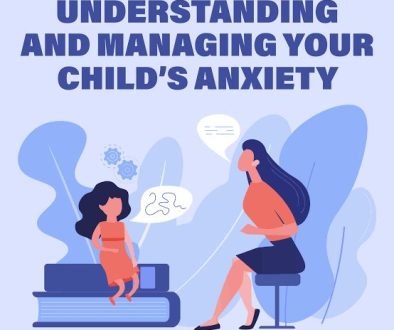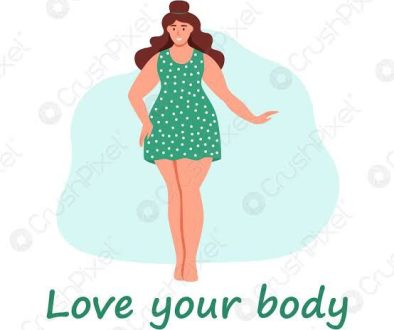Understanding Body Dysmorphic Disorder
This is a mental health condition characterized by an intense preoccupation with perceived flaws or defects in one’s physical appearance, often to a degree that is excessive and out of proportion to any actual imperfections. This preoccupation can cause significant emotional distress and interfere with daily functioning, impacting an individual’s social life, work, school, and relationships. People with BDD may engage in repetitive behaviors or mental acts, such as checking mirrors, grooming excessively, or seeking reassurance, as a means of coping with their distress about their appearance.
Understanding Body Dysmorphic Disorder
Body Dysmorphic Disorder is more than just feeling self-conscious or having low self-esteem; it is a mental health condition where individuals experience obsessive thoughts and behaviors around perceived physical flaws. These flaws are often minor or unnoticeable to others, yet individuals with BDD perceive them as severe and prominent. Common areas of concern include facial features (such as nose, skin, or eyes), hair, body size, and muscle tone, though any body part can become a focus of concern.
This disorder often starts in adolescence, a time when many people naturally become more focused on their appearance. Left untreated, BDD can become chronic, severely affecting an individual’s quality of life and potentially leading to other mental health issues, such as anxiety disorders, depression, or even suicidal thoughts.
Symptoms of Body Dysmorphic Disorder
People with BDD often experience a range of obsessive and compulsive behaviors related to their appearance. Symptoms can vary from person to person but commonly include:
– Intense preoccupation with one or more perceived flaws in appearance that are often unnoticeable or appear minor to others
– Repeatedly checking the mirror or avoiding mirrors entirely due to distress over appearance
– Excessive grooming, including skin picking, hair grooming, or other attempts to “fix” perceived flaws
– Comparing oneself to others in terms of appearance
– Seeking reassurance about appearance from others, though any reassurance given typically does not ease the individual’s distress
– Avoiding social situations or other activities due to fears of being judged or seen as “ugly”
– Considering or undergoing cosmetic procedures to change appearance, often leading to dissatisfaction or repeated procedures
These symptoms cause significant distress and can interfere with daily activities, leading many with BDD to struggle with maintaining work, school, or personal relationships.
Diagnosis of Body Dysmorphic Disorder
Diagnosing BDD requires a comprehensive assessment by a mental health professional, as individuals with BDD often feel shame or embarrassment and may not openly discuss their concerns. During the assessment, a clinician will ask about the nature of the individual’s preoccupations, how often they occur, and how much distress or impairment they cause in daily life.
It is essential to differentiate BDD from other conditions with similar symptoms, such as obsessive-compulsive disorder (OCD) or eating disorders. A diagnosis of BDD is made when an individual has an intense, distressing preoccupation with perceived flaws that lead to repetitive behaviors or mental acts, significantly impacting functioning.
Causes and Risk Factors
The exact causes of BDD are not entirely understood, but several factors are believed to contribute to its development:
– Genetics: A family history of BDD or other mental health conditions, such as anxiety or OCD, may increase the risk of developing BDD.
– Brain structure and chemistry: Abnormalities in brain areas involved in visual processing and emotional regulation, as well as imbalances in neurotransmitters like serotonin, are thought to play a role in BDD.
– Environmental factors: Experiences of bullying, teasing, or criticism about appearance, especially in childhood, can increase vulnerability to BDD. Cultural and societal standards that emphasize beauty and physical appearance may also contribute to the disorder.-
-Personality traits: People with certain personality traits, such as perfectionism, high sensitivity to criticism, or a tendency to focus on details, may be more likely to develop BDD.
Treatment and Management of Body Dysmorphic Disorder
Treatment for BDD can be challenging but is often effective in reducing symptoms and helping individuals lead more fulfilling lives. The main approaches to treatment include therapy, medication, and support from loved ones.
– Cognitive-behavioral therapy (CBT): This form of therapy is considered the most effective treatment for BDD. CBT helps individuals challenge and change unhelpful thought patterns related to their appearance, reduce compulsive behaviors, and develop healthier coping strategies. Exposure and response prevention (ERP) is a specific CBT technique that can help individuals resist the urge to perform appearance-related rituals.
– Medication: Selective serotonin reuptake inhibitors (SSRIs), a type of antidepressant, are often prescribed for BDD. SSRIs can help reduce obsessive thoughts, compulsive behaviors, and the anxiety associated with BDD. Medication can be particularly helpful for individuals with severe symptoms or co-occurring disorders.
– Group therapy and support groups: These provide a supportive environment where individuals with BDD can share experiences, reduce feelings of isolation, and gain encouragement from others facing similar challenges.
– Family therapy and support: Involving family members in treatment can help loved ones understand BDD and provide effective support. Families can play a crucial role in helping individuals with BDD feel less alone and reinforce positive coping strategies.
Living with Body Dysmorphic Disorder
Living with BDD can be challenging, as the intense preoccupation with appearance can impact nearly every aspect of life. Individuals with BDD may avoid social gatherings, miss work or school, or withdraw from relationships due to feelings of shame or embarrassment. The persistent fear of judgment and self-criticism can contribute to low self-esteem, social isolation, and depression.
For individuals with BDD, learning to recognize and manage the disorder is an ongoing process. With effective treatment, however, many individuals experience significant improvements in symptoms, regain confidence, and find ways to engage more fully in daily life. Building a supportive network, including friends, family, and mental health professionals, can make a substantial difference in coping with BDD. Practicing self-care and patience with oneself are also essential for recovery.
Conclusion
Body Dysmorphic Disorder is a complex and often misunderstood condition that can have a profound impact on an individual’s mental health and overall well-being. Characterized by obsessive concerns about perceived flaws, BDD can interfere with daily life, leading to social isolation, distress, and reduced quality of life. With proper treatment, including therapy, medication, and support, individuals with BDD can manage symptoms and work toward a healthier self-image and improved mental health. Early intervention and understanding from family, friends, and mental health professionals can play a vital role in helping those affected by BDD on their path to recovery.



